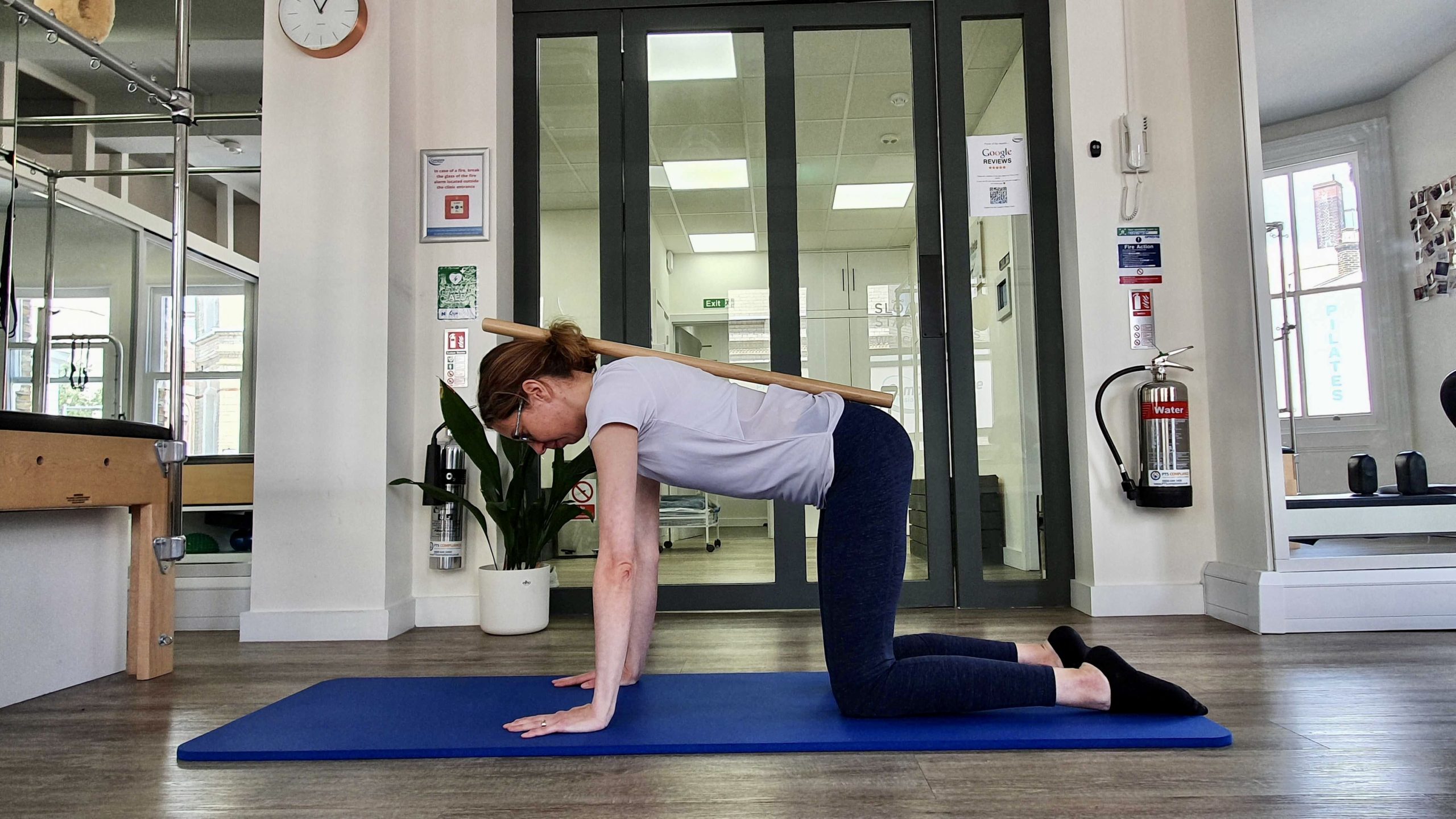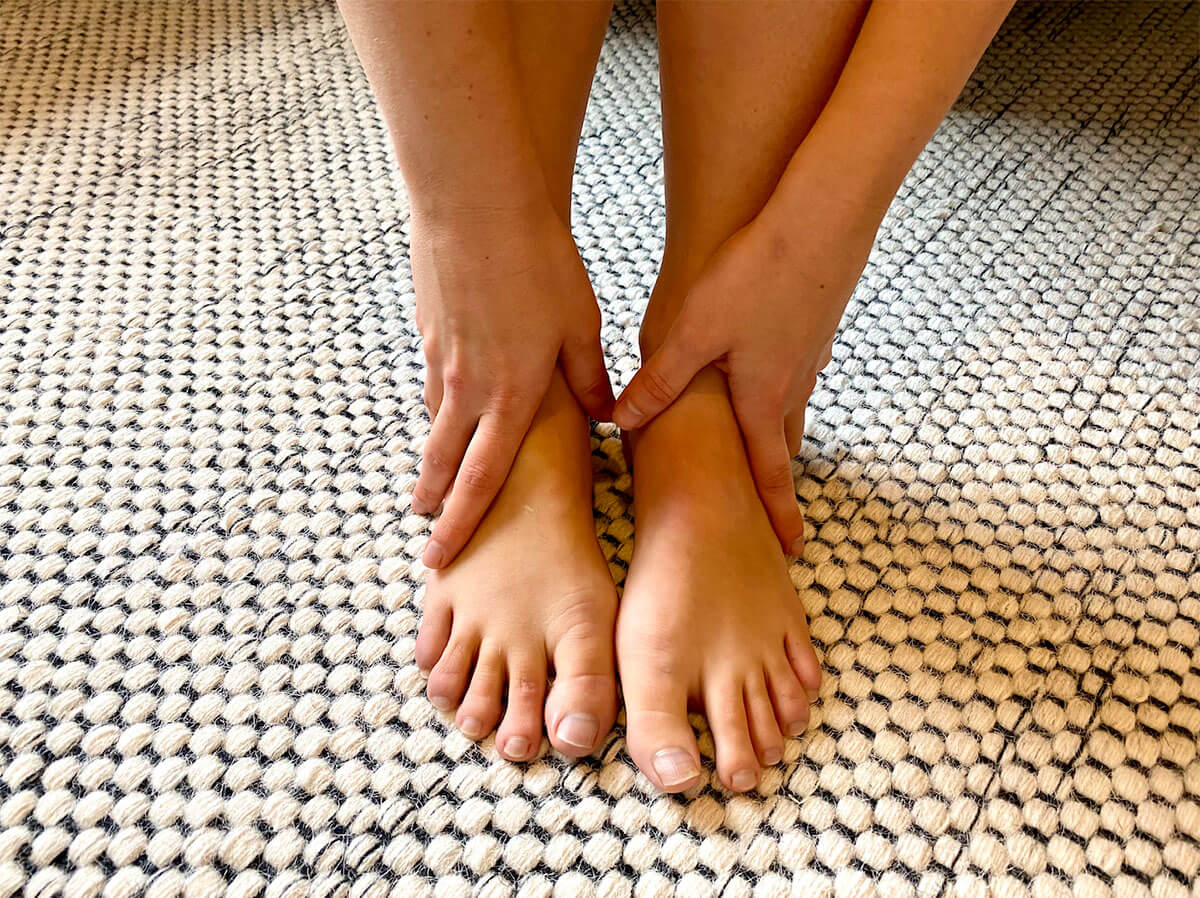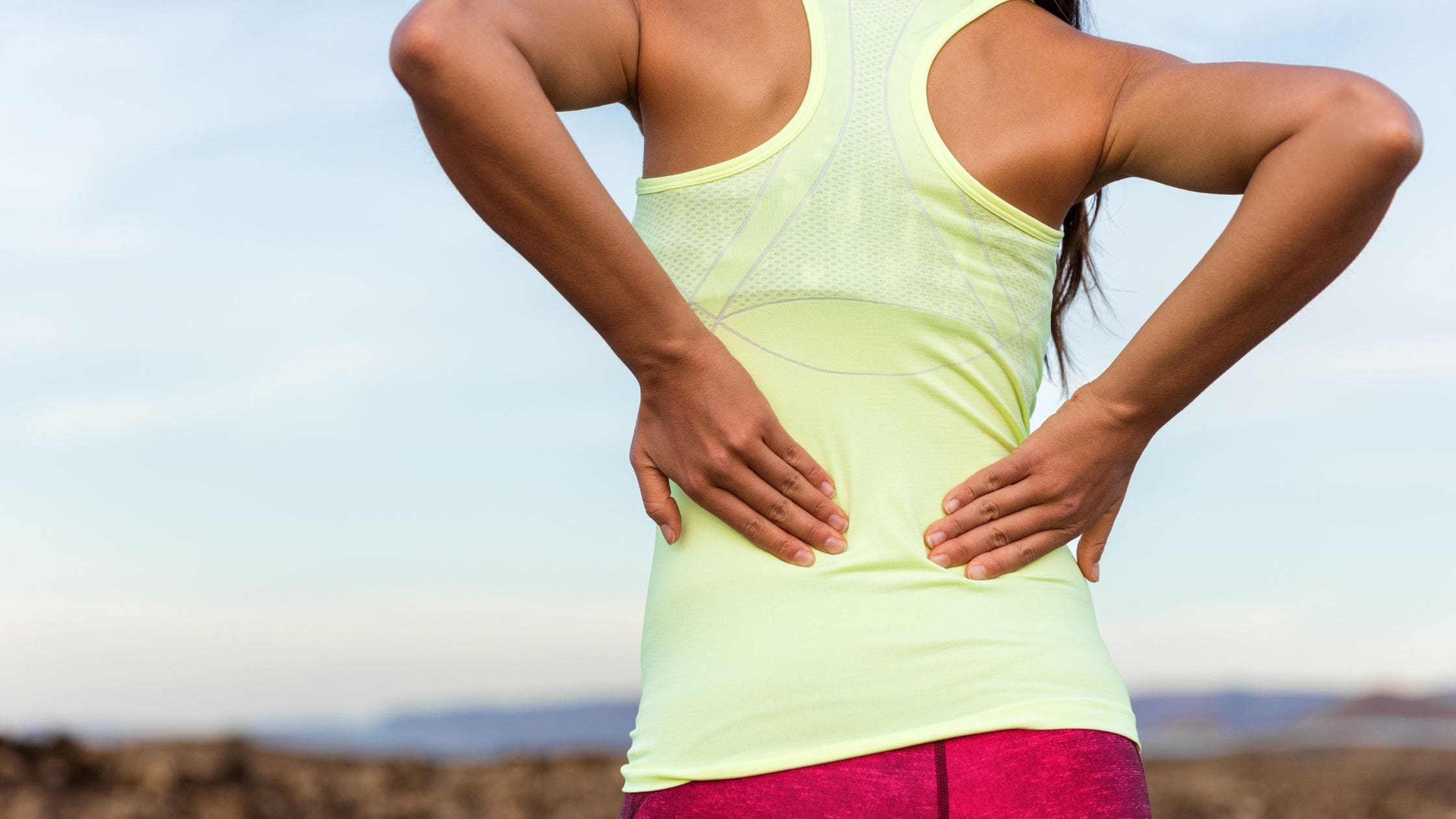Have you ever been told you have scoliosis? Maybe a Pilates instructor, PT or physio told you that you have scoliosis? Or are you worried that your child has a curved spine?
We are going to talk about what scoliosis is, how you diagnose it and what conservative management you can do to help your scoliosis.
What is scoliosis?
Scoliosis is a three-dimensional condition, characterised by an abnormal twisting and curvature of the spine and trunk.
While many adults with scoliosis do not have pain or disability due to their scoliosis and importantly, may never get it, some people can be at risk of curve progression and/or pain in the future.
According to SOSORT Guidelines 2011 (The International Scientific Society on Scoliosis Orthopaedic and Rehabilitation Treatment) the three-dimensional aspect of scoliosis means that there is a lateral curvature in the frontal plane, an axial rotation in the transverse plane and changes in the sagittal plane lordosis and kyphosis curves, most often leading to a flat back.
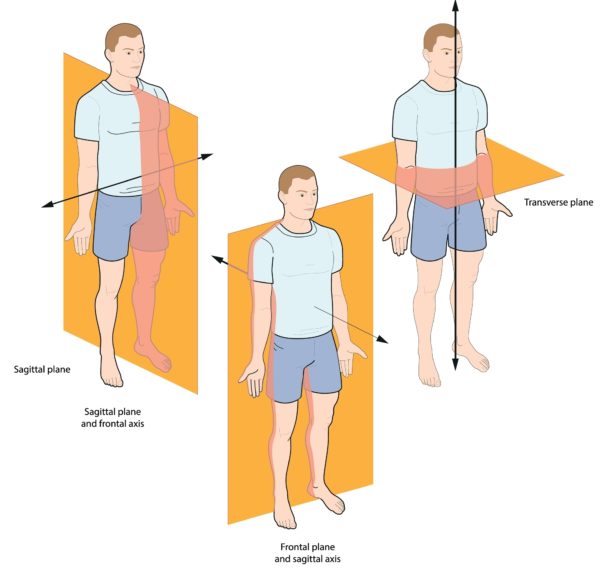
How to know if you have scoliosis?
Scoliosis assessment is a very complex process undertaken by a clinician who specialises in this condition. This means that if you have done a Pilates roll down and been told you have scoliosis because they ran their fingers down your spine in this position, this may not be the case.
During an assessment, the clients’ medical history is being taken, a physical exam will take place and normally some kind of images will be taken (x-rays or MRI commonly). A simple test called Adam’s Forward Bend test is often used as an initial screen on children or adolescents. This is when you lean forward with your feet together and bend to 90 degrees at the waist, keeping your spine straight. This is a simple test which acts as an initial screen but cannot determine accurately the type of curve or degree of deformity.
The degree of curve is measured by the Cobb method which gives a degree and therefore the severity. A positive diagnosis is 10 degrees but can be greater depending on the severity. Often scoliosis is diagnosed in children or adolescents and patient’s are educated about their scoliosis type and treatments available. The risk of progression will also be assessed by evaluating skeletal maturity and curve magnitude. This is why the earlier the scoliosis is diagnosed in children, the earlier the treatment can start and risk of progression minimises.
Related reading: Pilates for children
Types of scoliosis
Scoliosis can be classified as idiopathic, congenital or neuromuscular.
The most common type of scoliosis is idiopathic scoliosis. The term “idiopathic” is used when no underlying disease can be identified and the scoliosis is probably due to several causes. This accounts for around 80% of cases. Research also suggests that the progression of idiopathic scoliosis is found in the height of someone’s growth phase. This means that for girls it is often between 11-13 years old for boys, 13-15 years old.
Congenital means that it has results due to a malformation of one or more vertebrae in the embryo.
Neuromuscular scoliosis accounts for all scoliosis which is secondary to a neurological or muscular condition such as cerebral palsy, muscular dystrophy and spina bifida.
According to SOSORT “the causes are being sought in congenital or acquired disorders of vertebral structure such as asymmetrical structure of the brain stem, sensory and balance impairment, disorders of blood platelet and collagen function.” (2016 SOSORT guidelines: orthopaedic and rehabilitation treatment of idiopathic scoliosis during growth).
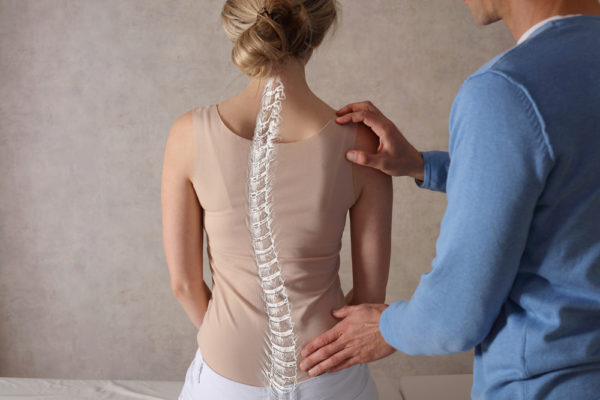
Signs and symptoms of scoliosis
There are several signs and symptoms which are associated with scoliosis which includes:
- Shoulders are uneven with one or both shoulder blades sticking out
- Your head is not centered over the middle of the pelvis
- One or both hips are raised or unusually high
- Your rib cages are at different heights and waist is uneven
- The appearance or texture of the skin overlying the spine changes (dimples, hairy patches, colour abnormalities)
- The entire body leans to one side
Normally when you are looking at someone standing from behind, the spine should appear straight. However, if scoliosis is present, the person may look like he or she has a spine with an S or C shape and is leaning to one side.
Also, when observing from the sides, a normal spine should appear slightly curved inwards (lordosis) in the lower back and behind the neck and outwards (kyphosis) around the pelvis and middle back. In scoliosis, one side in any of the above areas might appear more prominent or flatter than the other but it is not always the case.
Will my scoliosis progress and what should I do to help?
Your risk of progression is often during the initial assessment and with follow ups with the specialist. However, it is recommended that you start some form of treatment quickly. Your specialist will often recommend exercise, bracing, observation or surgery depending on the severity of the curve. These are aimed at reducing severe trunk deformities which can significantly impact your quality of life and include:
- Appearance
- Disability level
- Back pain
- Psychological well-being
- Breathing function
What can I do if I have been diagnosed with scoliosis?
In scoliosis, therapeutic treatment is often provided by a specialist and can take many forms. If you have been diagnosed with scoliosis, Pilates and equipment Pilates is an amazing tool to assist in your rehab and is one of the methods used. The most important thing is that you see someone with a strong understanding of scoliosis and what it is.
During an initial Pilates assessment, we are not trying to diagnose your scoliosis. Instead, we are collecting information which will help provide awareness of movement patterns which could contribute to your scoliosis pattern. In turn, this will help you gain back your function in your day to day activities and help you work towards your personal goals.
In the initial treatment phase, the sagittal plane is be addressed first by ensuring there is a corrected, stable and elongated spine. The aim is to open the compressed areas so that they can be expanded with the help of the breath
In the Pilates studio, the easiest way to help you with greater body awareness, especially in the first sessions, it is great to start by lying down on your back. The floor provides feedback so that basic stability exercises, such as dead bug, arm arcs, bent knee openings can begin. Also, if you have scoliosis, gravity can sometimes be the worst enemy, because of the natural pull and compression of spine which can affect the condition further.

Little cushions, small rolled up towels or something like an oov, can also be used under hips, lower back, ribcage or shoulder blades to bring the spine into a more neutral position. The aim of the props is to open the concavities rather than sinking deeper into the scoliosis curves, hence promoting a better alignment. It is worth remembering that if you have scoliosis, it can be difficult to feel comfortable in neutral alignment, therefore building body awareness with as much feedback as possible is a must.
The core and scoliosis
A corrected, stable and elongated spine must always start from “the base” – that is the pelvis and core. Scoliosis is basically a spinal instability condition and the most common location that we see instability is in the lumbar spine. A risk factor for spine instability can be a weakened or deconditioned core.
The core is a complex set of local (deep) muscles in the pelvis and torso which help stabilise the spine. The major core muscles are the abdominals in front, the obliques on the sides, the lower back muscles, the diaphragm at the top and the pelvic floor at the bottom. The term “local muscle” refers to the muscles in close proximity to bones and joints. Typically, they aren’t movement producers but when they’re strong they will provide enough stiffness to allow movement of a joint to happen efficiently and with as little effort as possible. Since scoliosis is an instability condition these muscles must be strong to be able to support the spine.
Core stability is one of Polestar Pilates school’s main principles alongside with the breath and axial elongation. We need appropriate core control to create a stable “base” in order to avoid injuries. If your core muscles are strong and stable then the risk for pain caused by scoliosis decreases. The important thing to remember is that your core works as hard as it needs to to stabilise a movement. This means that when you lift something heavy, the muscles work harder.
There are unfortunately cases when people try to over-activate their core by bracing. This is another example of the core not working efficiently as it can create unnecessary pressure which in turn will limit the movement and the breath alongside it as well. The core must therefore find as much as necessary activation with as little effort as possible.
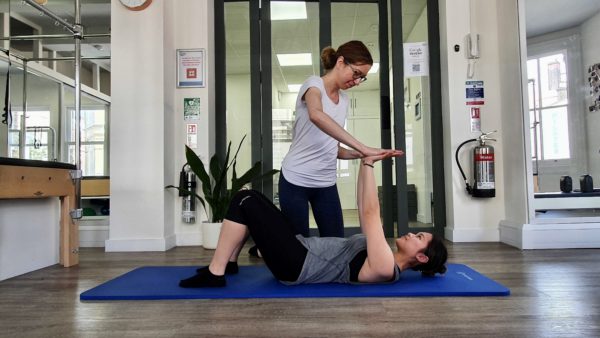
A simple example of how you can feel the core stability is by lying down on your back with your arms stretched out in front of you. Have someone gently press down on your arms and you will feel your tummy working. If that same person keeps increasing the amount of pressure your tummy will work more!
With any spinal instability condition, compressive shear forces can cause and affect these further. Once a stable base is in place, we can start working on axial elongation. Axial elongation refers to maximising the elongation of the spine so that it can provide optimal spacing of the joints during movements. The more we can work on elongating the spine, the more the body awareness will start improving and the risk of falling into old unhealthy postures will decrease.
A couple of examples which we can use in the Pilates studio is hanging with hands on a bar but keeping the pelvis or the feet on a supportive box for stabilisation. Also, by using a stick on your back during exercises such as quadruped can ensure the spine remains stable whilst the arms and legs reach away from each other to create that much needed elongation.

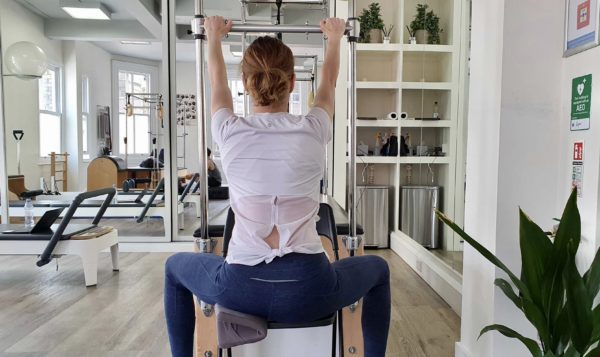
The most important thing to remember is that there are many ways in which exercises can be used and modified in Physio Pilates if you are with the right instructor. These are based on an individual’s abilities, limitations, risk factors and personal goals.
Scoliosis can’t be reversed with Pilates exercises, but the ultimate goal is to offer a complementary form of exercising which will strengthen the body and build body awareness, which in turn will decrease the risk of pain in the future.
Get in touch! You can find us at one of our Pilates studios in London and speak to us about your needs. You can find us at our studios below:
Education is key:
These blogs are designed to give information to everyone, however, it is important to remember that everyone is different! If you have not seen one of our therapists and have any questions about injuries, what you have read or whether this may be useful to you, please just ask. We are more than happy to help anyone and point you in the right direction. Our biggest belief is that education is key. The more you understand about your injury, illness and movement, the more you are likely to improve.


